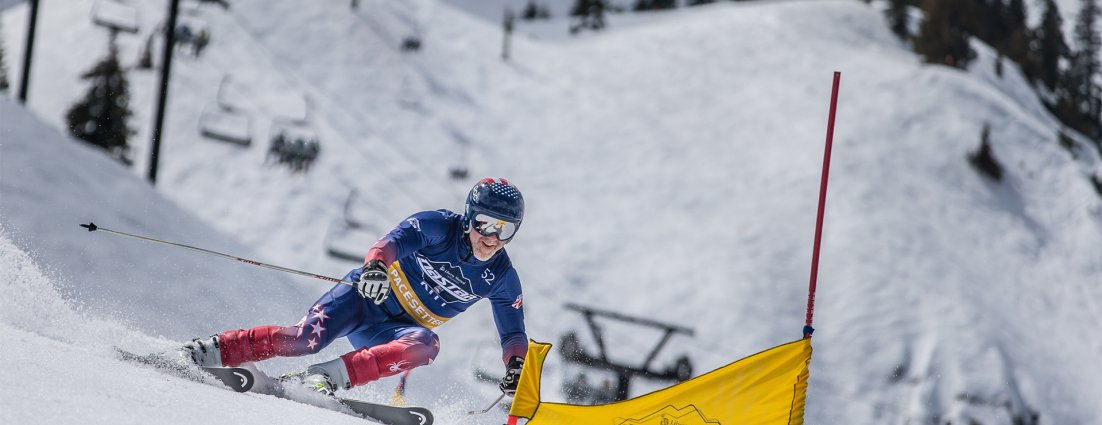Want to Race?
02.03.2021 | Jessi Hackett

To tighten those turns and improve that stance, try SKI Magazine’s NASTAR racing.
This article was originally published on Skimag.com in 2015
Square your shoulders. Always look ahead. Drive your body forward. Skiing tips sound effortless on paper, but feel so tricky once you’re on the mountain, clipped in and moving downhill. The key to getting better, as with most sports, is repetition and practice to generate muscle memory. One way many strong skiers get better and hone technical skills is through racing. Luckily, ski racing is about more than attending an expensive ski academy as a grom or traveling every weekend to race with a club.
Enter NASTAR ski racing.
SKI Magazine established NASTAR Racing—which stands for National Standard Race—in 1968 to create a recreational racing option for skiers of all ages and capabilities. More than 120 resorts across the U.S. host NASTAR courses.
While there are other programs similar to NASTAR, like Vail Resort’s EPIC Mix Racing, none have as broad an athlete base, with more than 165,000 racer days recorded throughout the season at 115 resorts. NASTAR provides each participant with a web page to track progress and check out their rankings at the resort, in their state of residence and nationally. Racers can win platinum, gold, silver, or bronze medals through their resort, and can qualify for the National Championships. Each racer has the opportunity to be as competitive (or have as much fun) as they’d like.
What’s more, it doesn’t break the bank. “NASTAR is great value,” says former NASTAR Director Bill Madsen. “Most resorts charge $10 to $15 to race all day long and many resorts sell a season pass that further reduces the fee.”
Some of the best alpine racers raced with NASTAR before moving up the international ranks, including Ted Ligety and Daron Rahlves. Other skiers who’ve been involved in NASTAR include Julia Mancuso, Stacey Cooke, AJ Kitt, Casey Puckett, and Tommy Moe. But whether or not you’re among the world’s speediest, ski racing improves your all-mountain skiing. “The best way to improve skiing skills is to challenge skiers to make a turn in a specific place, e.g. around a gate. When skiers, snowboarders, telemark skiers, or adaptive alpine racers can link turns through a race course, their skill level improves dramatically,” says Madsen.
“It teaches you incredible balance and an athletic stance that will allow you, whether you race for two years or twenty years, to always be one of the best riders on the mountain,” says Kaylin Richardson, a professional big mountain skier, former NASTAR “Pacesetter” (a racer who establishes the zero handicap for the course) and two-time Olympian.
“When you see a skier who has a racing background from the chairlift, you can just tell. They are more powerful and precise.” If nothing else, ski racing is a gateway into a community of like-minded folks, who want nothing more than to make some good turns down the hill.
-